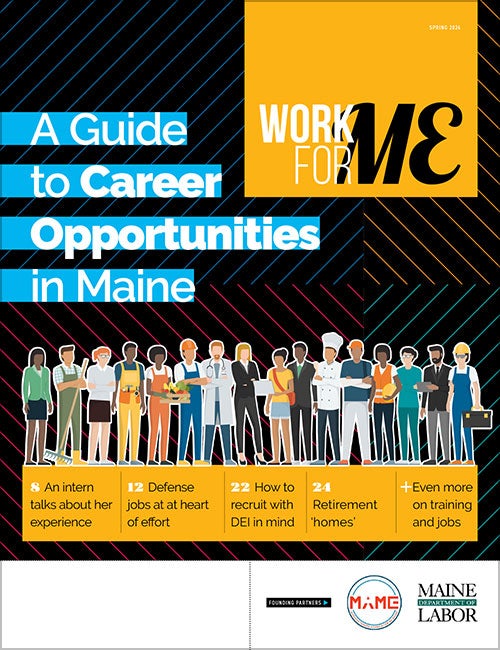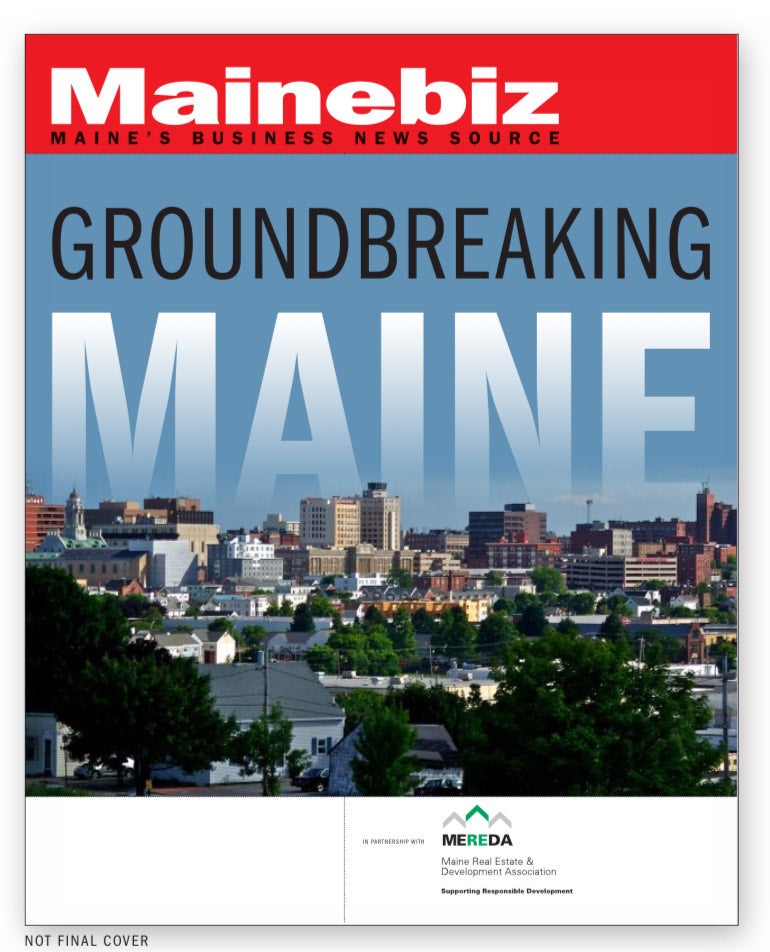
Processing Your Payment
Please do not leave this page until complete. This can take a few moments.
- News
-
Editions
-
- Lists
-
Viewpoints
-
Our Events
-
Event Info
- Women's Leadership Forum 2025
- On the Road with Mainebiz in Bethel
- Health Care Forum 2025
- On The Road with Mainebiz in Greenville
- On The Road with Mainebiz in Waterville
- Small Business Forum 2025
- Outstanding Women in Business Reception 2025
- On The Road with Mainebiz in Bath
- 60 Ideas in 60 Minutes Portland 2025
- 40 Under 40 Awards Reception 2025
- On The Road with Mainebiz in Lewiston / Auburn
- 60 Ideas in 60 Minutes Bangor 2025
Award Honorees
- 2025 Business Leaders of the Year
- 2024 Women to Watch Honorees
- 2024 Business Leaders of the Year
- 2023 NextUp: 40 Under 40 Honorees
- 2023 Women to Watch Honorees
- 2023 Business Leaders of the Year
- 2022 NextUp: 40 Under 40 Honorees
- 2022 Women to Watch Honorees
- 2022 Business Leaders of the Year
-
-
Calendar
-
Biz Marketplace
- News
- Editions
- Lists
- Viewpoints
-
Our Events
Event Info
- View all Events
- Women's Leadership Forum 2025
- On the Road with Mainebiz in Bethel
- Health Care Forum 2025
- On The Road with Mainebiz in Greenville
- On The Road with Mainebiz in Waterville
- + More
Award Honorees
- 2025 Business Leaders of the Year
- 2024 Women to Watch Honorees
- 2024 Business Leaders of the Year
- 2023 NextUp: 40 Under 40 Honorees
- 2023 Women to Watch Honorees
- 2023 Business Leaders of the Year
- + More
- 2022 NextUp: 40 Under 40 Honorees
- 2022 Women to Watch Honorees
- 2022 Business Leaders of the Year
- Nomination Forms
- Calendar
- Biz Marketplace
35 million visitors a year (and counting)
 Photo / Tim Greenway
Steve Hewins, president/CEO of HospitalityMaine
Photo / Tim Greenway
Steve Hewins, president/CEO of HospitalityMaine
 Photo / Courtesy Maine Office of Tourism
Steve Lyons, director of the Maine Office of Tourism
Photo / Courtesy Maine Office of Tourism
Steve Lyons, director of the Maine Office of Tourism
 Photo / Peter Van Allen
Cruise ships have become a continual presence in the Portland harbor, and help extend the tourism season into the fall.
Photo / Peter Van Allen
Cruise ships have become a continual presence in the Portland harbor, and help extend the tourism season into the fall.
Over the past 25 years, an increasing number of visitors have discovered Maine’s attractions. Summer visitation has been expanding into the shoulder seasons of spring and fall. Food and brew have become powerful tourism magnets in themselves, especially with the rise of the farm-to-table and sea-to-table movements.
As a result, Maine has seen a huge increase in the presence of national hotel brands, complementing an equally strong brand of small, locally owned lodgings.
“In the 1980s, there were no real national hotel brands in Maine,” says Steve Hewins, president and CEO of HospitalityMaine. “There were a few here and there, but mostly they were all independent properties. The global brands found Maine in the 1990s and more aggressively in the last couple of decades. Now you see them everywhere.”
What’s happened, he says, is a growing relationship between restaurants and hotels. “People are coming to Maine for the restaurants and that’s filling hotel rooms,” he says. “I always say that restaurants are becoming the tip of the spear of economic development in the state. A restaurant or a brew pub opens up in a downtown and the next thing you know, the hotels are looking there.”
Other factors are driving visitation. They include Maine’s easy access from population centers in southern New England and New York combined with unspoiled landscapes and what’s seen by some as a traditional way of life. Then, too, there’s the growing number of cruise ships, the rise of ecotourism, the millennial generation’s interest in “experiential” travel and destination weddings.

Tourism grew substantially in the 1980s, 1990s and into the 2000s, especially in coastal areas, southern Maine and Acadia National Park. Since 2012, it's been averaging 5% annual growth and now exceeds 36 million visitors a year. The advent of new promotions over the years — such as tours emphasizing fall foliage, night sky, winter recreation, h heritage or brewpubs — has helped broaden the industry’s reach. Festivals, fairs and music events, ranging from the Common Ground Fair in Unity to Bangor’s Waterfront Concerts, also attract thousands of visitors and, in some cases, extend the economic benefit into shoulder seasons.
Infrastructure like hotels and inns, restaurants, golf courses, outdoor-equipment shops and guide services have evolved accordingly. Acadia National Park is one of Maine’s most popular attractions, with 3.5 million visitors in 2018, up from 2.7 million in 1994, but it is also one of the most congested. Increased traffic has force creation of strategies, like additional public transportation in the park and a reservation system for Acadia’s most popular spots.
A marketing push to spread tourism seasonally and geographically is seeing some success.
“When I first started, the focus was mostly on the summer,” says Steve Lyons, director of the Maine Office of Tourism, who has been with the agency 20 years. “The vast majority of business still comes in the summer, but over the last several years we’ve expanded into the shoulder seasons. Now we’re putting more effort behind spreading the wealth among all four seasons.”
The internet played an interesting role in how tourism has evolved, Lyons notes. In the 1990s, the internet was relatively new.
“When I started in 1998, our website was a static page with a listing of things to do, broken down under headers,” he recalls. “There was no way to do a search. A year or so later, we moved to a database-driven website. That made it so people could actually search for things, like lodgings in a particular community, as opposed to scrolling through endless listings of inns and B&Bs. That was big.”









0 Comments